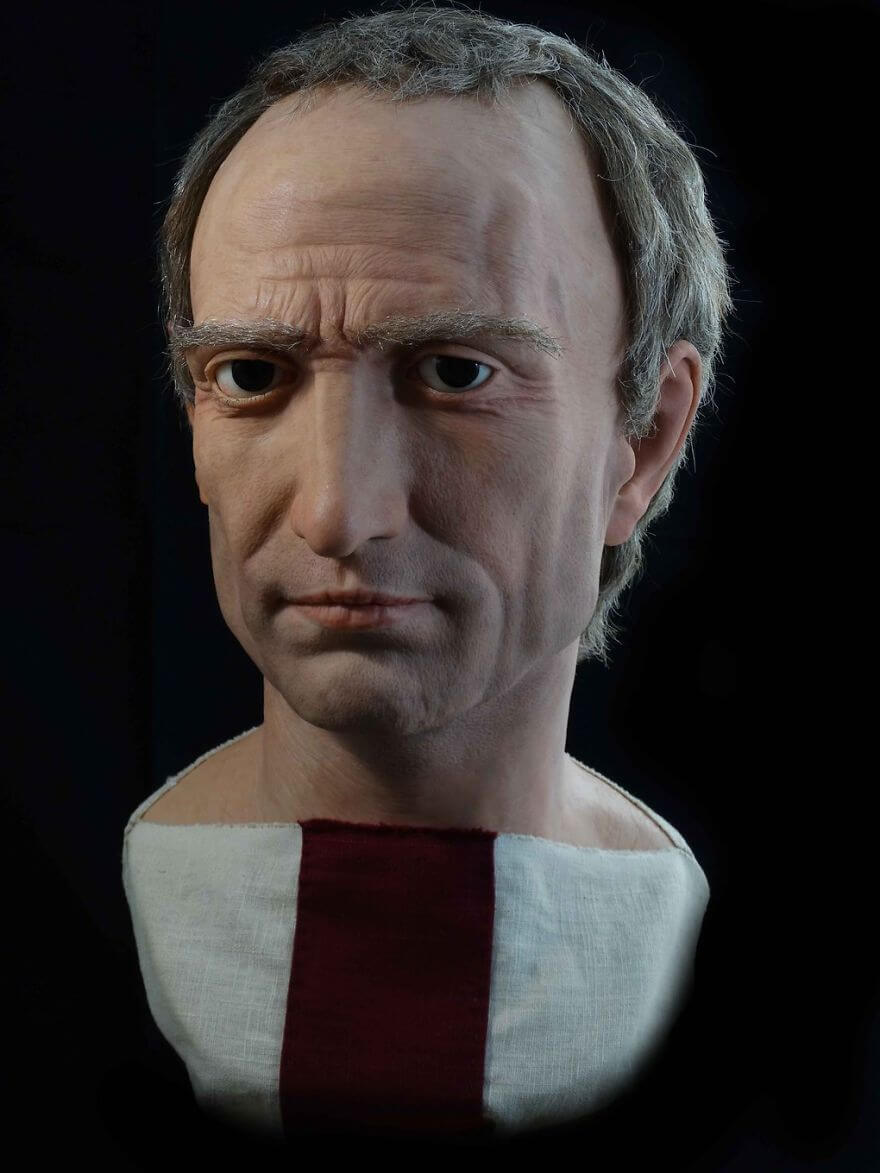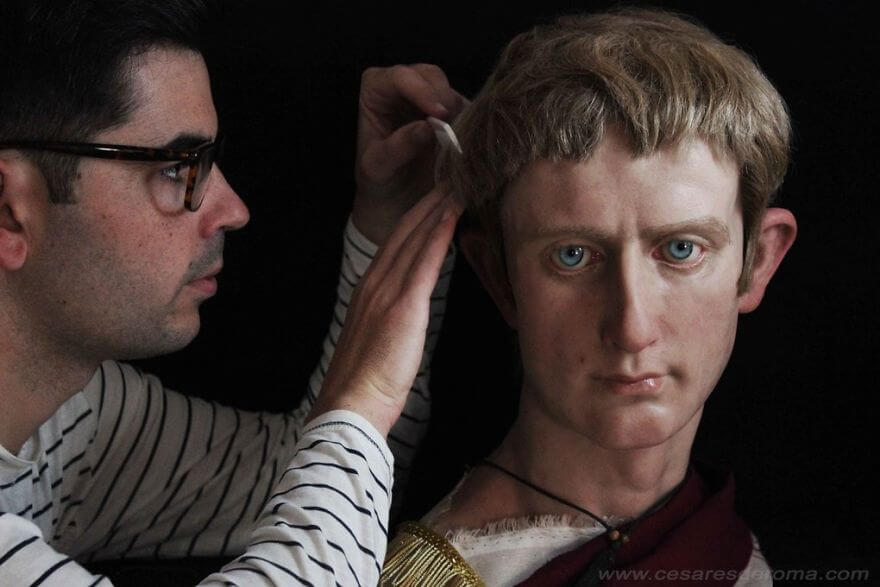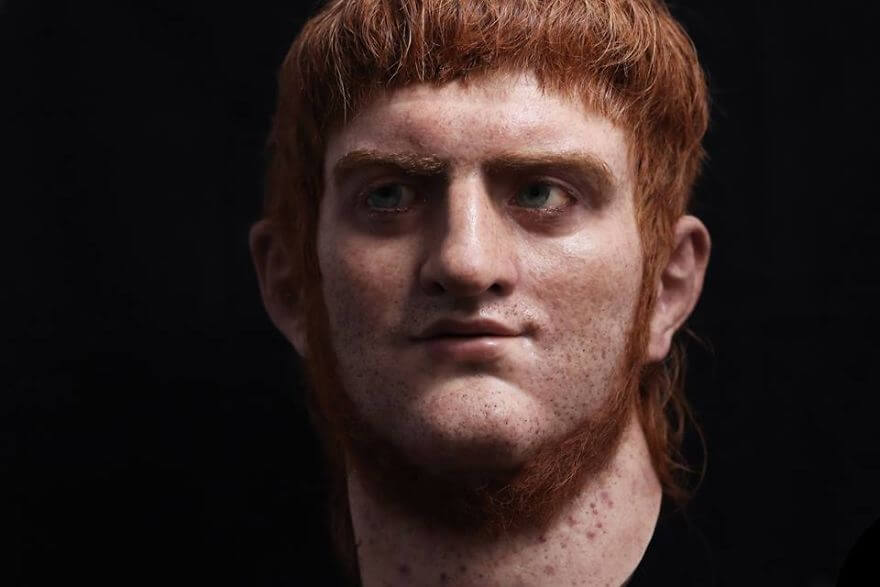
What is the first thought that comes to mind when you think about Rome? It might be the iconic ancient Roman gladiatorial arena – the Colosseum, or an excavated heart of the Roman Empire also famous as Roman Forum, that was the center of day-to-day life in Rome many centuries ago. And though Rome has all the right to boast about its architectural heritage, today’s topic isn't about that.
A young Spanish sculptor, as well as the person behind the Cesares de Roma project, decided to commemorate three notorious rulers from ancient times of Rome – Julio Caesar, Octavian Augustus, and Nero – by creating hyperrealistic sculptures for them.
The project was borne out of the necessity to spread classic Roman history from a more human and modern perspective. Recreating the faces of Roman rulers that died two thousand years ago isn't a small feat. Exhaustive research of numismatics, sculptures, and reliefs play a fundamental role in bringing these historical figures back to life in our time.
“Césares de Roma aims to be a didactic reference in terms of new ways of spreading classical culture based on emotional learning. Julio Caesar will be the starting character of this unique exhibition in the world, which will teleport the visitor to classical Rome [as it progresses] from the final stages of the Roman Republic to the decline of the Julio-Claudia dynasty.”
Scroll down to take a look at how the artistrevives ancient Rome’s rulers via hyperrealistic sculpting.
1) Julio Caesar was the last Roman Dictator



Julius Caesar was a Roman politician, a celebrated military general, historian and dictator that played a paramount role in the history of the Greco-Roman world. Even those that know very little about Caesar as a historical personality recognize his family name that commands a certain degree of respect.
Among the most essential roles, Caesar played in history was that of contributing to events which inevitably led to the demise of the Roman Republic and the rise of the Roman Empire.
On 15th March 44 BC (Ides of March), Julius Caesar was assassinated as a result of a conspiracy by several Roman senators. The physician, Antistius, that attended to Caesar’s remains determined that even though he was stabbed many times (23 to be exact), only one of the wounds was fatal – the second one to his chest. Caesar’s death marked the end of the Roman Republic as well – a consequence that conspirators of the assassination didn't anticipate.
One of the more intriguing facts about Caesar is that throughout his lifetime (and shortly before the assassination) he had the month of Quintilis renamed as July in his honor.
2) Octavian Augustus was the first Roman emperor




Augustus (also famous as Octavian) was the first emperor of ancient Rome. He rose to power after the assassination of his great-uncle and adoptive father – Julius Caesar, that in his will named Augustus as his adopted son and heir. Augustus controlled Imperial Rome from 27 BC until his death in AD 14 (aged 75), and his reign was dubbed ‘Pax Romana’ – a term that marked an era of relative peace.
Augustus is considered to be one of the most significant administrative geniuses of history. He reorganized every field of Roman life during the entire empire and transformed the crumbling republic into a new, monarchic regime based on easy communications and flourishing trade.
Like his predecessor had a month’s name changed in his honor, so did Augustus. In 8 BC, a month that was initially named Sextilis was renamed as August. Sextilis was renamed to honor Augustus because some of the most significant events in his rise to power, leading to the fall of Alexandria, fell in that month.
3) Nero, the emperor who was notorious for his cruelty




Nero (also called Nero Claudius) was the fifth Roman emperor, whose rule is mostly associated with tyranny and extravagance. He was an emperor who, if left alone and uncontrolled, would often pursue his tastes and pleasures.
Nero saw that he could do whatever he liked without fear of censure and retribution, that was how his inordinate artistic pretensions started. Not only did he think himself to be a poet, charioteer and lyre player, but he also began giving public performances, taking the roles of anything from pregnant women to executed slaves. To the general populace, those antics looked liked serious breaches of civic dignity and decorum.
Even though it isn't confirmed, Emperor Nero is thought to be the culprit of the Great Fire of Rome that caused widespread devastation in the city on 18th July, 64 AD. During the fire, the emperor was at his villa at Antium 35 miles (56km) away from Rome, though, which meant that he couldn't be held accountable for the fire which ravaged the city.
Nevertheless, Nero used the destruction caused by the fire as a chance to have the city reconstructed in the Greek style and build a palace which would have covered a third of Rome, if only it were finished.
According to Suetonius and Tacitus, Nero tried to shift responsibility for the fire to the Christians too (that were widely believed to engage in many depraved practices at the time), and that resulted in their ruthless persecution. That earned Nero the new alias of Antichrist in the early Christian tradition.
With Nero’s death came the end of the Julio-Claudian dynasty rule that lasted for about 100 years.
More info: cesaresderoma.com | Facebook
References: Bored Panda, Britannica.com













COMMENTS